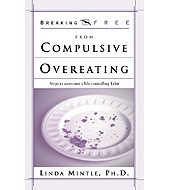 Last night, I did a live webinar on Food Addiction and emotional eating. So many of the call-in questions concerned what to do instead of reaching for food when emotionally upset. This is a great question because it has to do with breaking the habit of going to food for emotional reasons.
Last night, I did a live webinar on Food Addiction and emotional eating. So many of the call-in questions concerned what to do instead of reaching for food when emotionally upset. This is a great question because it has to do with breaking the habit of going to food for emotional reasons.
In order to break that habit, you have to substitute another behavior for the food. This doesn’t mean that the substituted behavior will be as pleasurable as eating, as easy to do as eat, or as rewarding as food. But it does mean that if you can continue to substitute another behavior, or what I am calling use an an emotional rescue, you will eventually break the habit of reaching for food to soothe yourself.
Here are examples of emotional rescues. Your list should be tailored to you.
- Walk around a room–get up and move and distract yourself
- Talk to someone
- Play a CD and get lost in the music
- Write a To Do list
- Draw or paint
- Take a long relaxing bath
- Clean something
- Play with your pet
- Count to 10 and then backwards, deep breathe
- Pray
- Journal your thoughts
- Exercise–short walk, stretching, etc.
Another technique called the Graduated Approach, uses this idea with food. When you feel like you must have a trigger food, add a small helping of a fruit or vegetable to the trigger food. Do this every time you reach for the trigger food and add a little less of the trigger food, and more of the healthier option. Eventually, you will associate the healthy food with the reward feeling of the trigger food.
Add these two tips to your plan to work on breaking free from emotional or compulsive eating. It can be done.


